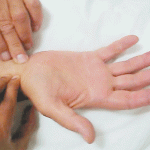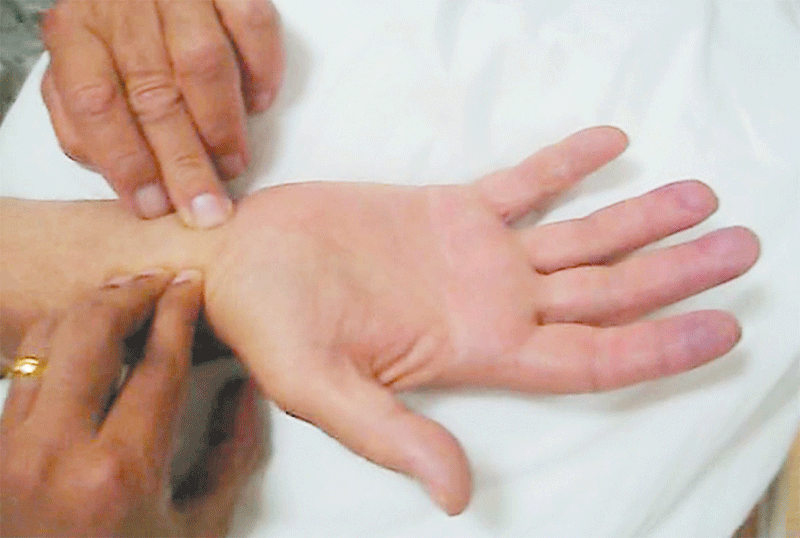 Procedure that measures the collateral circulation to the radial artery.
Procedure that measures the collateral circulation to the radial artery.
A bedside test used to evaluate the patency of the arteries of the hand before arterial puncture. The patient elevates the hand and repeatedly makes a fist while the examiner places digital occlusive pressure over the radial and ulnar arteries at the wrist. The hand will lose its normal pink color. Digital pressure is released from one artery (usually the ulnar), while the other (i.e., the radial) remains compressed. If there is normal blood flow through the unobstructed artery, color should return to the hand within 10 sec. The return of color indicates that the hand has a good collateral supply of blood and that arterial puncture of the compressed artery can be safely performed.
